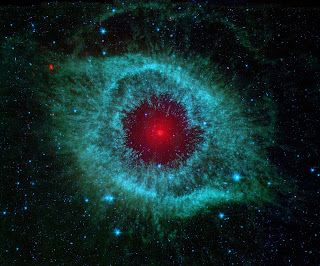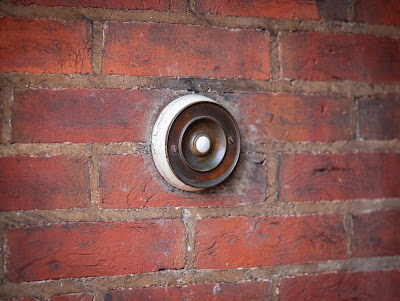Best telescope for viewing planets and galaxies for beginners
From the beginning of the 17th century, telescopes were used to observe stars, planets, and celestial bodies light-years away from Earth. The telescope uses a magnifying lens or a curved mirror to collect and focus light from the night sky to allow the naked eye to see distant stars and planets through the eyepiece.
Tracking and mapping the movements of stars and planets in the night sky through the lens of a telescope is not only a great hobby, but it can also be a serious scientific endeavor. Choosing the best telescope for home use depends on your telescope plans, where you intend to use it, and your level of experience, from beginner to amateur to semi-professional astronomer.
Types of telescopes
The three main types of telescopes are refractor, reflector and compound. Which telescope is right for you depends on how you plan to use it.
Refractor
One of the most common types of telescopes, refracting telescopes are the versions typically found in popular media. At the front of the telescope, a lens known as an "aperture" directs light through the telescope to a mirror in the eyepiece. Since this style of telescope does not invert the image before it reaches the eye, users can view objects both in the sky and on Earth. However, for viewing very faint objects in the sky, a reflector or compound telescope generally works better than this type of telescope.
Reflector
Reflecting telescopes do not use lenses; instead, its two mirrors come together and direct the light from the night sky. This process inverts the image, making it difficult to see objects on Earth. However, this method helps to focus and provide additional clarity for objects that would appear faded in a refracting telescope. Without a lens it means that dust and dirt can get into the internal components. Users should regularly plan to clean the telescope and store it in an appropriate location.
Compound
Compound or catadioptric telescopes combine refractor and reflector telescopes into an extremely accurate product. Instead of two mirrors or a mirror and a lens, the compound telescope contains two mirrors and a lens. The path that light travels through the telescope tube is reversed, but then reverts to a vertical orientation before passing through the eyepiece, meaning users can see objects in the sky and on Earth. Increasing the magnification along the tube helps improve the strength and clarity of the telescope. However, compound telescopes typically cost more than refractor or reflector telescopes.
What to consider when choosing the best telescope
Before you buy a star observing telescope, be sure to keep these important purchasing considerations in mind to narrow down your selection.
Purpose
How you plan to use your new telescope is an important factor to consider. Whether you plan to watch live, watch live and record, or practice astrophotography, consider the different strengths of different telescopes and mounts.
- Live viewing is simply looking through the telescope without worrying about videos or photography; almost all telescopes work for this purpose. However, for intensities greater than those of the human eye, adequate magnification requires a minimum aperture size of 70mm. If you plan to move your telescope to multiple locations during your stargazing expeditions, you should probably also consider its portability.
- Live viewing and recording is done when you look through a telescope and use your phone (or other device) to record your session. It's not a new practice, but it's much more popular now since almost everyone has a smartphone. To record, look for a telescope with a smartphone holder, which allows you to mount the phone on the telescope, so that the video and picture are not distorted by movement.
- Astrophotography, essentially the photography of astronomical objects, began almost 200 years ago in 1840, when the first photograph of an astronomical object was taken. For astrophotography, the ideal telescope includes an equatorial mount with slow motion or motorized controls to track specific celestial bodies as they move in the night sky. Telescopes with electronically programmable “GoTo” features are available, but cost more.
Experience level
Although the level of experience should not be a factor that prevents anyone from entering astronomy, keep that in mind when choosing a telescope. The best telescope is not the most powerful; instead, it’s what you’ll use most.
- Beginners (and most children) are usually attracted to telescopes that are too complex - and expensive - for their skill level. Instead of investing in an expensive instrument before they know if they’re going to enjoy the hobby, beginners usually benefit from a smaller, more accessible telescope with an aperture of no less than 70 mm. They should look for a simple model with an easily adjustable mount, so they can spend more time looking at the sky than trying to figure out how to use their equipment.
- Amateur astronomers may have a few years of experience observing stars and planets, but may not be ready to dive into more advanced telescopes. At this level of experience, amateurs may want to start exploring astrophotography or at least invest in an equatorial mount or GoTo for their telescope, which allows users to move quickly between objects in the sky.
- Seasoned astronomers who have been observing the night sky for years will likely invest in a powerful telescope with complex functions such as an electronic touchpad to program coordinates into the telescope and mount. However, experienced astronomers and astronomy hobbyists may have one or more telescopes with different strengths and weaknesses.
Opening size
One of the most important things to consider when choosing a new telescope is the size of the bezel. The aperture, the diameter of the lens or mirror of the telescope, is also known as the "objective". The larger the opening, the clearer weak objects will be through the telescope.
The aperture size usually appears near the focuser in the front of the tube or on the product description or manufacturer's website. The size of the aperture is measured in millimeters, but can sometimes be displayed in inches, with 1 inch being 25.4mm. To ensure a view of the sky that is an adequate enhancement to the naked eye, select a telescope with an aperture of at least 70 mm (2.8 in).
Magnification
Since a telescope's magnification increases with a change of its eyepiece, its specific magnification capacity isn't as important as most people think. However, even at very high magnification, objects will remain dark and blurry. To solve this problem, the magnification must increase along with the size of the aperture.
As the size of the telescope aperture increases, so does the amount of light that can be collected and seen clearly, so dark and blurry objects become clear. Most users find that a useful magnification is between 20x and 50x per inch of aperture. Under ideal viewing conditions, this means that a 4-inch or 101.6mm spotting scope only gets a useful magnification of around 200x. A 6-inch or 152.4mm scope could reach up to 300x. Keep in mind that light pollution, smog pollution, cloud cover, humidity, and many other factors affect viewing conditions.
Avoid telescopes that boast extremely high magnification levels, such as 600x. They can magnify the light in the sky by 600x, but the resulting image in the eyepiece is indecipherable because, without an appropriate aperture, the light is not focused. For true 600x magnification, telescopes need an aperture of at least 12 inches or 304.8 mm.
Eyepieces
The eyepiece, an integral part of a telescope, can completely change the view of the sky. Eyepiece measurements, which normally appear in millimeters or inches, vary greatly in size. To ensure that the eyepiece has an appropriate magnification for the telescope, compare the size of the eyepiece with the focal length of the telescope.
Focal length divided by eyepiece size produces total magnification. For example, a telescope with a focal length of 500mm and a 25mm eyepiece provides 20x magnification. Those who have to wear glasses while looking through a telescope should look for an eyepiece with a significant distance between the eye and the eyepiece lens, which is known as an "eye pad". The extra length improves comfort and ease of use when wearing corrective lenses.
Telescope mount
There are three main types of telescopic mounts: altazimuth, equatorial, and motorized.
- Altazimuth mounts are simple systems that move vertically in an up and down motion or horizontally in a side-to-side motion. Use these brackets with a standing tripod or as a table telescope.
- Equatorial mounts, a more complicated type of telescopic mount, must be aligned with the earth's axis. Once the mount is aligned, the scope will follow objects in the sky as they move. This makes equatorial mounts particularly useful for astrophotography as the object stays centered while moving.
- Motorized mounts operate automatically when the user selects an astronomical object or the coordinates of the object. Coordinates for astronomical objects are based on ascension and declination. These mounts cost more, but they can save the time that otherwise would be spent manually moving and setting the telescope.
Size and Portability
Before you buy a new telescope, consider where you want to use it and how you plan to transport it. Having a telescope that’s too small to properly see anything probably is a waste of money, but a telescope that’s too big to move easily is a bigger waste. Many people find they set up a bulky telescope only once or twice, then leave it to gather dust because it’s too much effort to set up and haul around.
Instead, select a telescope with at least a 70 mm aperture to ensure a clear view of astronomical objects through the eyepiece. Once you find an acceptable opening, increase the size to the desired level, keeping in mind that you must move and store it. In addition, you must consider whether it will fit in your car. For a clear view, users sometimes transport their telescope away from light pollution caused by city lights.
Additional features
Some additional features may come with the telescope or telescope mount, including a carrying case, smartphone holder or a GoTo feature.
- The carrying cases keep the telescope safe during storage or transport to a new viewing location and back home. The cases are constructed with a variety of materials, from simple padded nylon to rigid plastic shells with durable inner lining.
- Smartphone stands, small accessories that can be added to a telescope, take pictures or record videos of stars, planets and other astronomical bodies.
- A GoTo is a compact on-board computer that can be connected to a motorized stand. The computer usually comes pre-loaded with information about the night sky and celestial bodies. Selecting a star, planet, galaxy or other astronomical object directs the motorized assembly to automatically locate the chosen object
YOU MAY ALSO READ:



Comments
Post a Comment